
Cooking up the "goat" peaches
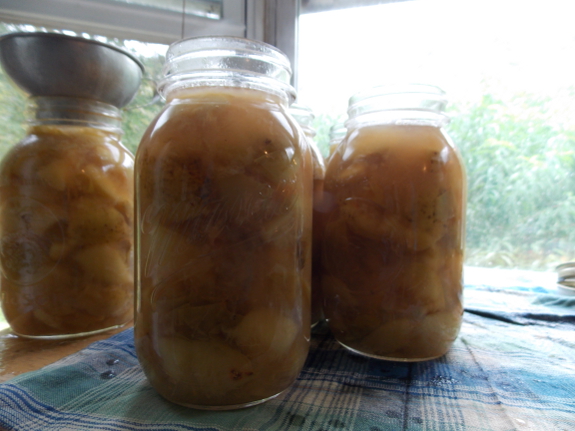
When it comes to
fruit management, Mom talks about separating the sheep from the
goats. The sheep are the good fruit that will last for a
while as-is, while the goats are damaged and need to be processed
ASAP.
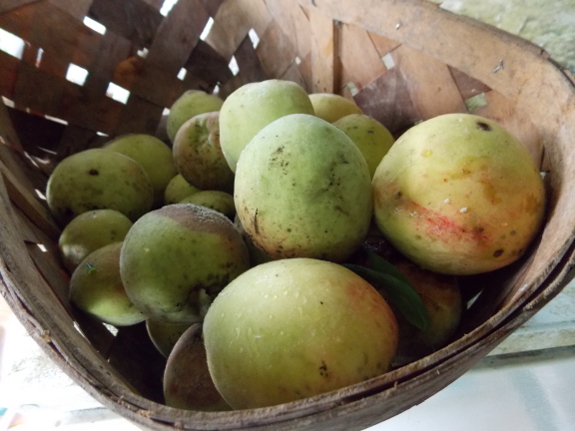
I accidentally
started sorting the sheep from the goats on our kitchen peach last
week when I
picked the more-damaged-looking peaches to bring inside and ripen. In retrospect,
those peaches were a little too unripe to reach perfection off the
tree, but I suspect my premature picking was instrumental in
keeping brown rot to a minimum on the tree despite nearly constant
rain. Brown rot first hits fruits with insect wounds or that
are touching other fruits, so removing those peaches before the
sugar content was high enough to feed the rot lowered the overall
fungal pressure for the tree. (I've been picking fallen or
rotten fruits at least every other day since then, too, which also
helps, but there have been many fewer rotten peaches than I
expected given this year's weather.)
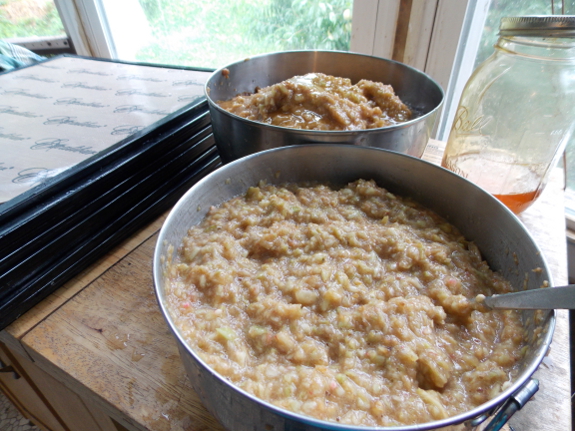
What all of this
sorting means in the real world is that I had at least half a
bushel of "goats" looking for a home Tuesday. Our freezer is
getting pretty full of fruit leather, but Mark talked me into
filling up the dehydrator one more time, then I opted to can the
rest of this batch of peaches. My goal is to have lots of
different variations
on preserved peaches to pick between this winter, allowing us to select our
favorite methods to focus on in later years.
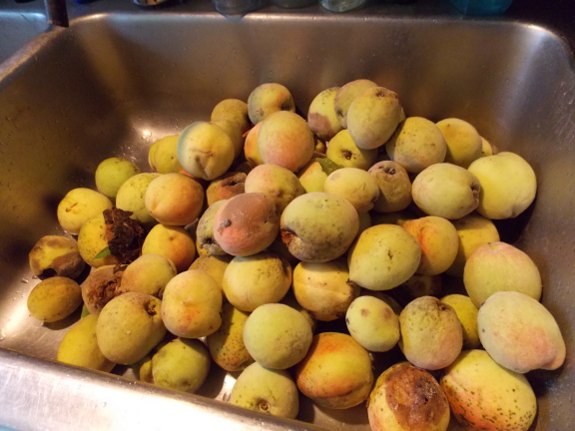
My go-to source for
basic canning information at the moment is the National
Center for Home Food Preservation, but that website nearly steered me wrong
this time. If other sources on the internet are to be
believed, white peaches are like tomatoes --- only borderline
acidic enough for hot-water-bath canning. So even though the
NCHFP website didn't mention this, I added a tablespoonful of
lemon juice per quart to ensure my peaches are acidic enough to
can outside a pressure canner. Since I was adding lemon
juice, I decided to take NCHFP's advice on a different matter and
can in a very light syrup of 1-1/4 cups sugar in 10-1/2 cups
water, even though I'd been planning to can unsweetened peaches.
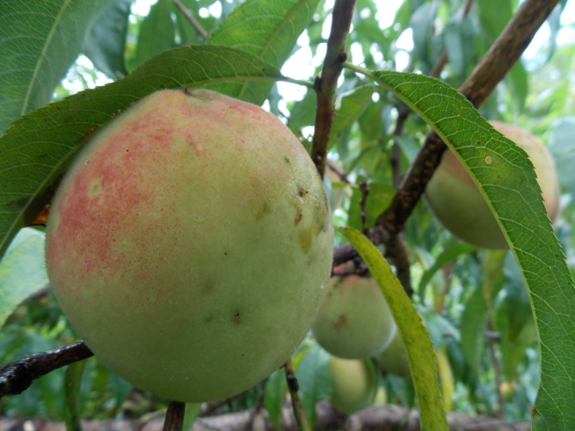
The rest of the
peaches on our kitchen tree look like sheep, although I'm sure a
few more will develop rot spots and bird bites in the next week or
so as they ripen. I plan to experiment next with making
peach sauce, then with a jam involving pectin, and then Mark will
probably talk me into turning the rest of the harvest into fruit
leather. That's not counting all the peaches I'll dice up
and add to our raspberry-and-blueberry-with-whipped-cream
desserts, of course.
Want more in-depth information? Browse through our books.
Or explore more posts by date or by subject.
About us: Anna Hess and Mark Hamilton spent over a decade living self-sufficiently in the mountains of Virginia before moving north to start over from scratch in the foothills of Ohio. They've experimented with permaculture, no-till gardening, trailersteading, home-based microbusinesses and much more, writing about their adventures in both blogs and books.
Want to be notified when new comments are posted on this page? Click on the RSS button after you add a comment to subscribe to the comment feed, or simply check the box beside "email replies to me" while writing your comment.

Mom --- I remembered that story, but not that it was white peaches involved. Thanks for sharing it here!
Daddy --- I like dried peaches, but I think I like peach leather better, and it's definitely easier to make.